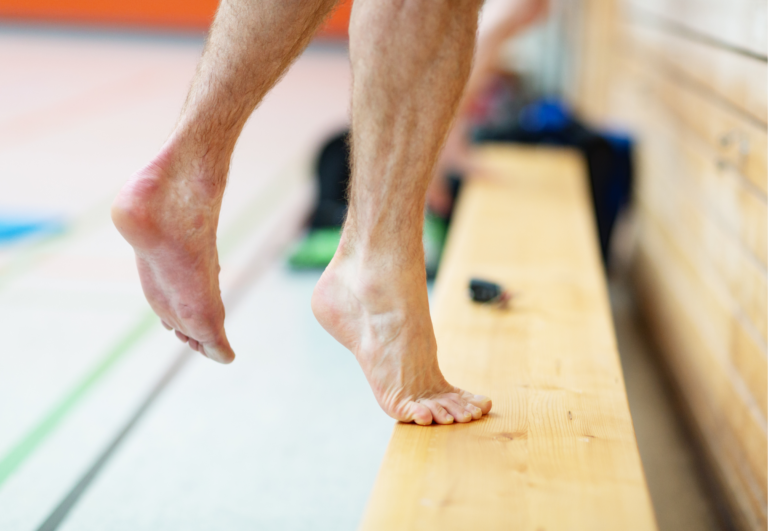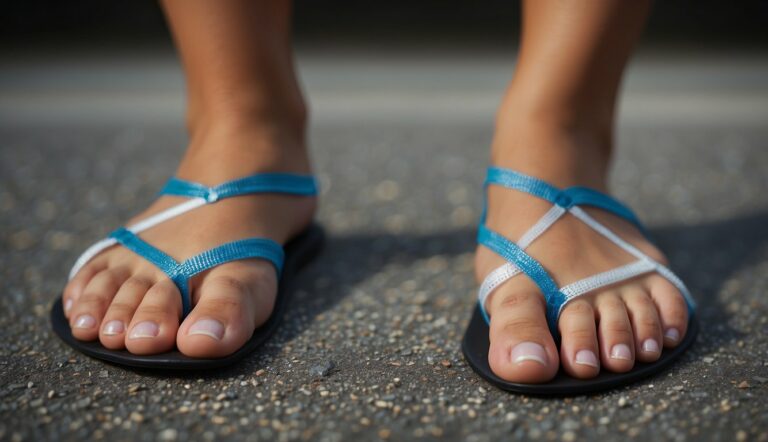How Toe Spacers Can Improve Toe Alignment: Unveiling the Potential Benefits
Toe spacers have garnered attention for their simple yet effective role in improving toe alignment. As someone who has extensively used toe spacers, I can attest to their potential benefits. Often overlooked, toe alignment is a key factor in maintaining foot health, and correcting misalignments can prevent various foot conditions. Toe spacers are designed to address crowding by creating space between the toes, which can lead to straighter toes and reduced risk of issues such as bunions and hammertoes.
Incorporating toe spacers into a daily routine can also have positive effects on overall foot posture. This improved alignment aids in correcting the distribution of weight across the foot, which can enhance stability and balance. People who stand for extended periods or athletes seeking to optimize their performance might find toe spacers particularly beneficial. When toes are correctly aligned, the foot can function naturally, allowing for better movement mechanics.
However, toe spacers are not one-size-fits-all solutions, and it’s crucial to consult with a podiatrist to ensure they’re suitable for your specific needs. While my experience with toe spacers has been positive, remember that individual results may vary, and professional advice is essential to make the best choice for your foot health. As with any tool aimed at improving physical well-being, responsible use under guidance is the key to reaping the benefits.
How Toe Spacers Can Improve Toe Alignment
Toe spacers are specifically designed to help improve toe alignment by gently separating the toes and encouraging them to assume their natural position. This can have several benefits for foot health and comfort.
Here’s how toe spacers can improve toe alignment:
- Separate crowded toes: Toe spacers can physically separate toes that have become crowded or overlapped due to tight footwear or other conditions.
- Reduce toe deformities: Regular use of toe spacers can help in correcting and preventing toe deformities such as bunions, hammertoes, and claw toes.
- Enhance foot function: Proper toe alignment can lead to improved foot function during activities such as walking, running, and standing.
- Relieve pressure on toe joints: By aligning the toes, toe spacers can alleviate pressure on the toe joints, reducing pain and discomfort.
- Promote a more natural gait: With toes in their natural position, the foot can better perform its biomechanical functions, leading to a more natural and efficient gait.

Toe Alignment and Foot Health
Proper toe alignment is crucial for maintaining foot health and overall body balance. Misalignment can lead to a range of foot conditions and deformities that affect stability and cause pain.
The Role of Toes in Balance and Stability
My experience has shown me that toes are fundamental to balance and stability. They act like a tripod for the body when standing, walking, or running. Healthy toe alignment ensures that weight is evenly distributed across the feet, which is essential in maintaining balance. When toes are properly aligned, they can perform their role in stabilizing movements, reducing the risk of falls and abnormal walking patterns.
Common Foot Ailments and Deformities
Many people suffer from common foot ailments and deformities that can be linked to poor toe alignment:
- Bunions: These painful swellings occur when the big toe pushes against the next toe, leading to a misaligned joint.
- Hammertoes: A deformity where the toe is bent at the middle joint.
- Plantar Fasciitis: Caused by strain and inflammation of the foot’s arch.
- Flat Feet: The lack of a proper arch can cause widespread pain due to misalignment.
- Corns and Calluses: These are areas of thickened skin caused by friction and pressure.
- Diabetes and Rheumatoid Arthritis: Both conditions can lead to foot problems due to poor circulation and joint damage, often impacting toe alignment.
Maintaining proper toe alignment can help prevent and alleviate symptoms from these conditions. It’s important to recognize the signs of foot deformities early and to consider non-invasive methods like toe spacers for improving foot health.
Benefits of Toe Spacers
Toe spacers are designed to maintain the natural position of your toes, offering a spectrum of benefits that cater to athletes and individuals experiencing foot discomfort.
Improved Mobility and Flexibility
Toe spacers can significantly enhance the mobility and flexibility of your toes by preventing them from becoming cramped.
- Mobility: The separation allows for a better range of motion, as each toe can move independently.
- Flexibility: Regular use may lead to more flexible toe joints and prevent stiffness.
Enhanced Athletic Performance
By aligning toes into their natural position, toe spacers may contribute to better athletic performance.
- Foundation: Proper toe alignment creates a stable base for various sports activities.
- Balance and Strength: More robust foot muscles and improved balance can stem from the consistent use of toe spacers.
Pain Relief and Recovery from Foot Conditions
Toe spacers are known to aid in the recovery process from certain foot conditions by promoting proper toe alignment.
- Pain Relief: Discomfort from overlapping toes and bunions can be alleviated.
- Recovery: They assist in the rehabilitation from injuries by reducing pressure and inflammation.
Correcting Toe Misalignments
Toe spacers are an effective tool I frequently recommend for promoting correct toe alignment and mitigating common toe deformities. They are designed to provide relief and serve as part of a comprehensive approach to foot health.
Addressing Bunions and Hammertoes
Bunions and hammertoes are two of the most prevalent deformities affecting toe alignment. Bunions are bony bumps that form at the base of the big toe, leading to misalignment, while hammertoes are characterized by an abnormal bend in the middle joint of the toe.
- How toe spacers help:
- Encourage proper toe alignment
- Reduce the pressure on the big toe joint for bunions
- Assist in stretching and strengthening toe muscles for hammertoes
Correct toe alignment is crucial for managing these conditions, and toe spacers can play a supportive role in a non-medical correction strategy. They work by maintaining a natural distance between the toes that can prevent the exacerbation of bunions and contribute to the realignment of the toes affected by hammertoes.
Preventing Overlapping and Crowding
Overlapping toes and crowding are other common issues where correct alignment is essential to alleviate discomfort. Overlapping toes occur when toes rest on top of each other, while crowding results from inadequate space, often causing toes to twist or bend unnaturally.
- Benefits of Toe Spacers:
- Prevent toes from overlapping
- Maintain space to avoid crowding
- Support proper toe alignment and relieve discomfort
By inserting toe spacers between each toe, I’ve seen improvement in toe alignment, reducing instances of overlap and crowding. This preventive strategy can avert further complications by ensuring each toe has sufficient space to rest in a natural position, thus promoting overall foot health.
Choosing the Right Toe Spacers
Selecting toe spacers that align with one’s specific needs is paramount. I consider material properties, appropriately match size to the foot, and recommend consulting with a podiatrist when necessary.
Material Selection: Silicone vs. Foam vs. Gel
Silicone:
- Pros: Durable, maintains shape, typically hypoallergenic
- Cons: Might be firmer than other materials
Foam:
- Pros: Soft, lightweight
- Cons: Less durable, might not hold shape as well
Gel:
- Pros: Flexible, cushioning effect
- Cons: Can tear more easily than silicone
| Material | Pros | Cons | Hypoallergenic |
|---|---|---|---|
| Silicone | Durable, shape retention | Firmer feel | Usually |
| Foam | Soft, lightweight | Lower durability, shape retention | Varies |
| Gel | Flexible, cushioning | Tears easily | Varies |
Fit and Size Considerations
- Fit: A proper fit is crucial for comfort and effectiveness. Spacers shouldn’t pinch or cause discomfort.
- Size: Ensure the spacer accommodates individual toe length and foot width for optimal alignment.
When to Consult a Podiatrist
- Complex Issues: For bunions or severe misalignments, personalized advice is best.
- Healthcare Provider Insight: A podiatrist can provide specialized recommendations to suit health needs.
Integrating Toe Spacers into Your Routine
Introducing toe spacers into your daily regimen can significantly improve toe alignment and foot strength.
Exercises and Warm-ups
Before slipping on toe spacers, it’s essential to warm up the feet. Stretching exercises, such as curling and spreading the toes, prepare the muscles for the spacer’s corrective alignment. For enhanced foot strength, I recommend exercises like picking up marbles with the toes or creating ‘waves’ by lifting each toe individually.
- Warm-up Activities:
- Toe curls and spreads
- Picking up objects
- Toe ‘waves’
Usage Guidelines for Athletes and Individuals with Foot Conditions
Athletes integrating toe spacers into their training routine should start gradually, using them during recovery periods to encourage proper toe alignment. Individuals with foot conditions can use toe spacers as part of their daily routine to manage symptoms. Consistent use can aid in stretching and strengthening the intrinsic foot muscles, potentially providing relief and preventing further issues.
- Usage Tips:
- Begin with short periods of use, progressively increasing duration
- Best used during rest or low-intensity activities
- Complement with specific foot exercises for maximum benefit





